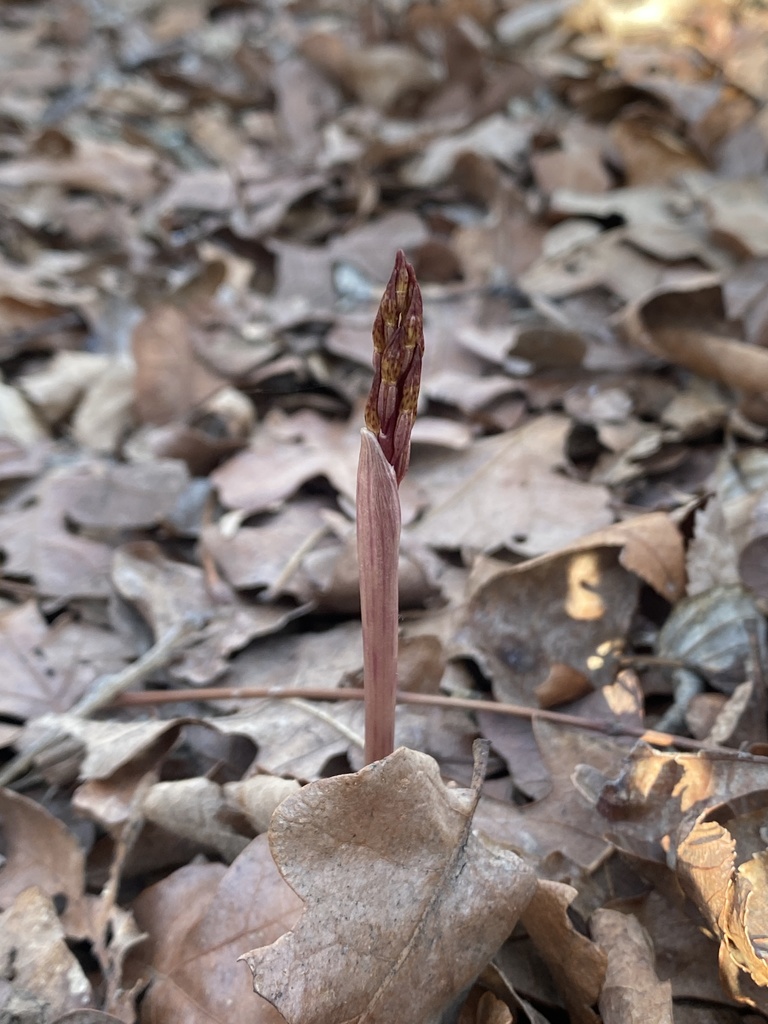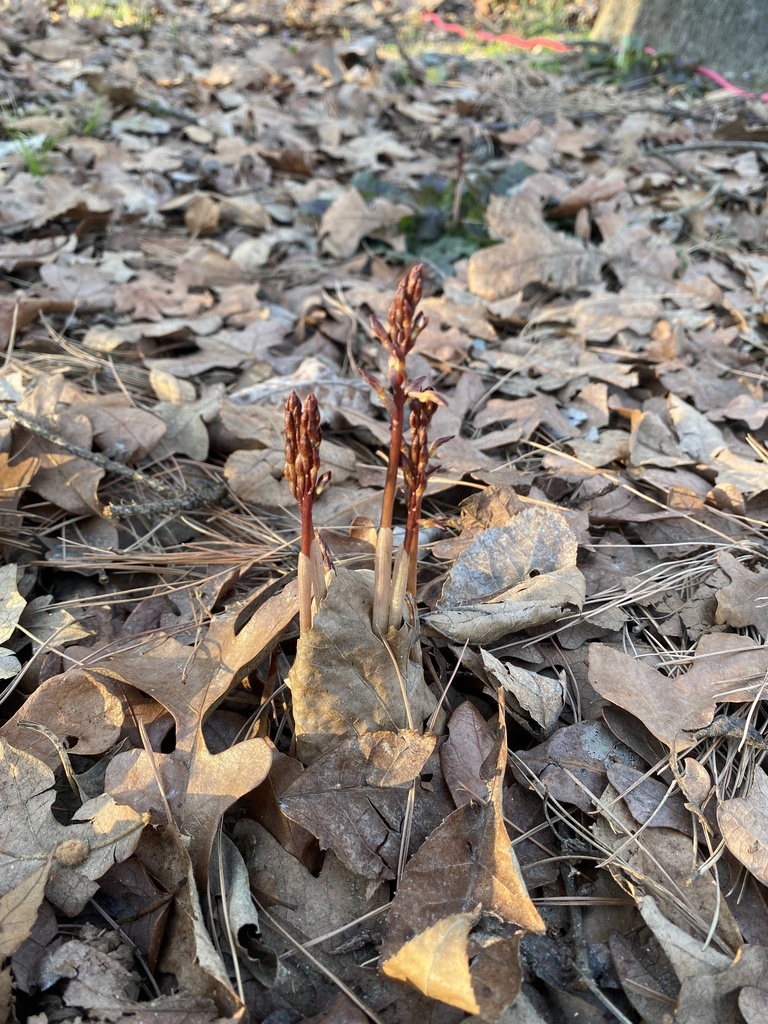If you wander through the woods of eastern Oklahoma during the early spring, keep your eyes peeled for maroon spikes rising from the leaf litter. These spikes look for all the world like young spears of asparagus. They might be hard to see at first, but once you have spotted one you will see others. I remember the first spike that I saw, which I showed to my 8-year-old daughter. She was soon off to see how many she could spot, calling out “I found one! I found another!” as she carefully examined the woods. But these are not asparagus spears! They are inflorescences of the Oklahoma native orchid Wister’s Coralroot (Corallorhiza wisteriana), also called the Spring Coralroot.

This is one of the 34 species and varieties of orchid native to Oklahoma. There is one other species from the Corallorhiza genus found in Oklahoma. The other species blooms in the fall and is appropriately named the Autumn Coralroot (Corallorhiza odontorhiza). Corallorhiza literally translates to “coral root,” named for the shape of the rhizome which resembles an upside down sea coral.
As the spikes grow to around 12″ tall the flowers relax away from the peduncle. The flowers open to reveal mauve and yellow sepals and petals, along with a contrasting white labellum (“lip”) mottled in purple. The flowers are small (about 1/4″) and may require you to get down on hands and knees to admire them, but they are quite attractive and worth the effort.



Notice that there are not any leaves accompanying the inflorescences. These plants never produce leaves and are therefore solely reliant on a neighbor to provide nutrition. They are mycotrophic, meaning that they receive nutrients from mycorrhizal fungi attached to the roots. In many cases mycotrophic plants reciprocate by providing the fungi with carbohydrates that were generated through photosynthesis. However, since the Wister’s Coralroot lacks leaves or any other green parts, it does not photosynthesize. In a natural deciduous forest, tree leaves are allowed to slowly decompose over time. This creates the rich soil chemistry that is necessary to harbor these plants and their accompanying fungi. You can read more about mycotrophism here.

Notice how the ovaries are swollen, indicating these flowers have been pollinated and are beginning to produce seeds.
The small flowers are short-lived, so you are lucky to find them open and displaying at their best. Regardless, it is a thrill to find this plant thriving in any state of its lifecycle. As with all native orchids, it is best to observe only and leave them where you find them.
